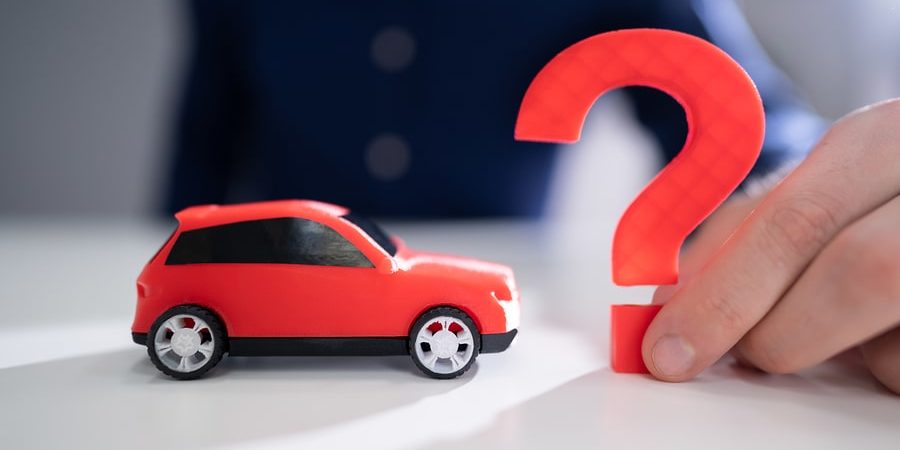In general, the number of serious car accidents is on the rise throughout the country. If you wonder whether the country has just hit a spate of bad luck or if drivers have gotten worse, the answer is the latter. People are paying less attention to traffic laws and care less about other drivers’ safety. Motorists want to get where they are going faster and are less concerned about the ramifications of their actions.
Although financial compensation after a car accident is crucial, it will not restore your health or the life that you had before the accident. Nevertheless, you need a check to compensate you for your injuries. The alternative is bearing the burden and paying the price for someone else’s carelessness, which you should never do.
You must determine the cause of your car accident with help from the right legal professional. Then, you can begin to zero in on the necessary evidence to present as part of your claim or lawsuit. Your car accident lawyer can gather the evidence you need that shows that someone else was to blame for your accident, entitling you to financial compensation.
Here are some of the common causes of car accidents.
Reasons Why Car Accidents Occur Guide
Distracted Driving

Since practically the beginning of the car, drivers have found something else to do besides driving when they are behind the wheel. Many things compete for the driver’s attention, even though they should be focusing on the road.
Fast food restaurants allow drivers to eat on the go and greatly magnify the problem of distracted driving. Some people even multitask by applying makeup and engaging in other personal grooming, looking directly at their mirror while driving instead of on the road.
All that compares to the invention of the smartphone. Now, drivers check their email and text when operating a car at high speeds. All it takes is a few seconds of inattention to cause a major accident. If a driver is reading a text, it takes approximately five seconds. In that time, the car will travel more than the length of an entire football field.
Less experienced younger drivers are even more likely to use their phones behind the wheel. These are the motorists who need to be paying attention the most.
Distracted driving often causes rear-end car accidents. Drivers do not notice a car stopping or going slower in front of them. Perhaps the most serious type of car accident caused by distracted driving is a head-on crash because a driver can veer out of their lane into oncoming traffic.
Impaired Driving
Driving while intoxicated (DWI) is illegal in every state, but someone still dies once every 45 minutes due to drunk drivers in the United States. Sadly, this behavior is not likely to end anytime soon. Too many people believe that they can safely make it home after too much to drink or using drugs, and no one can change their minds until it is too late and they cause devastating injuries or fatalities to others.
Fatigued Driving
Despite frequent awareness campaigns, many people are unaware of the dangers of drowsy driving. Falling asleep behind the wheel is just one aspect of fatigued driving. Of course, nodding off, even for a few seconds, is incredibly dangerous. Your car can travel hundreds of feet by the time you open your eyes.
Fatigued driving also means getting behind the wheel without proper rest. Your reflexes and ability to process challenges on the road suffer when you are overtired. Many people do not know that fatigued driving can be every bit as dangerous as drunk driving. Even though no laws prevent fatigued driving, it is still an extreme danger to others. Some people get behind the wheel when they are very tired, thinking it will be no big deal and they can safely make it to their destination.
Passenger car drivers do not have regulations like truck drivers regarding the hours they drive. Thus, roughly one in every 40 car accident fatalities involves fatigued driving.
Speeding
Drivers going too fast is perhaps the leading cause of car accidents. When a motorist is speeding, they have less time to react to challenges on the road. They cannot use their reflexes to avoid trouble.
Speeding also reduces the time drivers have to stop when there is a car in front of them or a hazard on the road. Further, when a driver is speeding, there is more of a chance that they will lose control of their car.
There was a time when speeding-related deaths were decreasing, but the pandemic reversed the progress. The number of speeding-related fatalities rose 17 percent from the previous year. Roughly 29 percent of accident fatalities happen due to speeding. Even if speed is not the primary factor in a fatal accident, it is often one of the factors.
Speeding also causes more serious injuries when drivers survive the accident. The higher the speed that a car is traveling, the more force a crash might involve
Speeding is not just going over the speed limit. It can also mean traveling too fast for the road conditions, such as not slowing down when traffic is heavier. Drivers may also speed when they do not slow down for curves.
Reckless Driving
Statistics show that reckless driving has increased throughout the country. Many drivers picked up unsafe habits during the pandemic when fewer cars were on the roads. It was easier to speed and weave in and out of traffic with fewer vehicles out and about. Unfortunately, many drivers kept these habits, even after more cars returned to the roads.
In one survey, drivers gave disturbing responses to questions about unsafe practices. Nearly half of the respondents admitted to traveling 15 miles per hour over the speed limit or more. Roughly two-thirds of millennials admitted to tailgating too closely to the vehicle in front of them.
The survey just counted drivers who self-reported their behaviors. Some drivers may engage in these practices and do not want to admit them to the person asking the questions.
Reckless driving has caused the recent spike in car accident deaths throughout the country. Even though the number of accidents may not have changed, the crashes that happen are more serious because they occur at higher speeds. Drivers have less of a chance to adjust and react when they are surprised by a reckless driver.
Inclement Weather
The roads become far more dangerous when conditions are less than ideal. Any type of adverse weather makes it more difficult to drive. The time when it first begins to rain is perhaps the most dangerous. The roadway can be slick with oil and other substances that come up from the surface. Then, heavy rains can make the roadway slippery and reduce visibility.
Snow and ice are hazardous for obvious reasons. When one driver loses control in difficult weather conditions, it increases the possibility of a multi-car accident.
The speed limit only applies in normal weather conditions. It is the maximum speed at which drivers can travel. During inclement weather, traveling at the speed limit may be unreasonable because drivers should go slower.
Inexperience
Drivers need to learn how to operate a car at some point. However, the first few years are when a driver is the most likely to make a mistake. Teenage drivers have the highest rates of accidents.
It takes a certain amount of experience to anticipate challenges on the road and drive defensively. Yet teenage drivers often have the most dangerous driving habits. They are the ones who are the most likely to text while driving. They are on the road during the late hours when visibility is the worst and drivers are most likely to be fatigued.
Sometimes People Just Make Mistakes
While most lists of car accident causes will detail instances where the driver actively does something wrong, the driver can just make a brief error in only a split second. Every time someone gets behind the wheel, they make a series of decisions. They can make numerous decisions each minute.
All it takes is one bad decision or one small momentary mistake to cause a large accident, especially when the driver travels at high speeds. Sometimes, even the best drivers have a bad day and make a bad decision. It does not matter what exactly the driver did wrong. As long as they failed to meet their standard of care, they should owe you money for your damages. Although drivers are not expected to be perfect, they take on the legal obligation to pay you compensation when their mistake is the cause of your injuries.
You Need to Show Who and What Caused Your Accident
When you are dealing with an accident due to a negligent driver, you must demonstrate the cause of the accident. You may not have to prove that they were texting while driving per se, but you must show that the driver came into your lane or ran a stop sign and hit you.
A car accident claimant has a legal obligation to come to the table with evidence that shows what the other driver did wrong. That is the only way an insurance company or a jury can compare the driver’s actions to that of a reasonable motorist.
Other Car Accident Causes Besides Drivers
In some cases, it may not be a driver who was responsible for your crash. The roads throughout the country are in deteriorating condition. As the federal government plans to spend a lot of money on fixing the roads, help may be in the future for drivers. In the meantime, drivers must contend with potholes and road designs that create dangerous hazards.
The government has an obligation to design roads and maintain them in reasonably safe condition. They are not liable for every accident because of the road’s condition. Still, they can be responsible when there is something excessively dangerous, such as a large pothole, that they did nothing about for an extended time. Governments can be liable for their own negligence, but there are different rules when you sue a governmental entity.
The car itself may be to blame for the accident. A part of the car may have been defective and failed, causing your accident. For example, the steering or the brakes may have malfunctioned. A rollover accident might have happened because of the design of the car.
If you suffered an injury in an accident because of the car itself, you might file a product liability lawsuit against:
You will need to prove that there was an actual defect or that someone was negligent in designing or manufacturing the part or car. Product liability lawsuits are high-stakes affairs, given the amount of money at stake.
A Car Accident Attorney Can Get to the Bottom of What Happened

An experienced car accident lawyer knows how to investigate your accident and compile the evidence necessary to put you in a position to receive financial compensation.
When you suffer an injury and do not know the legal process, investigating what happened is difficult or impossible. You do not know the right questions to ask witnesses or the right form to present your evidence. You need to tell a story showing both what happened and why you deserve financial compensation.
The insurance company needs persuasion to write you a check. Without the necessary evidence, the insurance company may deny your claim because you have not met your burden of proof. Similarly, you cannot prove your case if you go before a jury with insufficient evidence.
The first thing you should do after a car accident is contact a lawyer to get the legal help you need. A personal injury attorney will handle the details of the legal process and fight for you when the insurance company wants to take your legal right to full compensation.